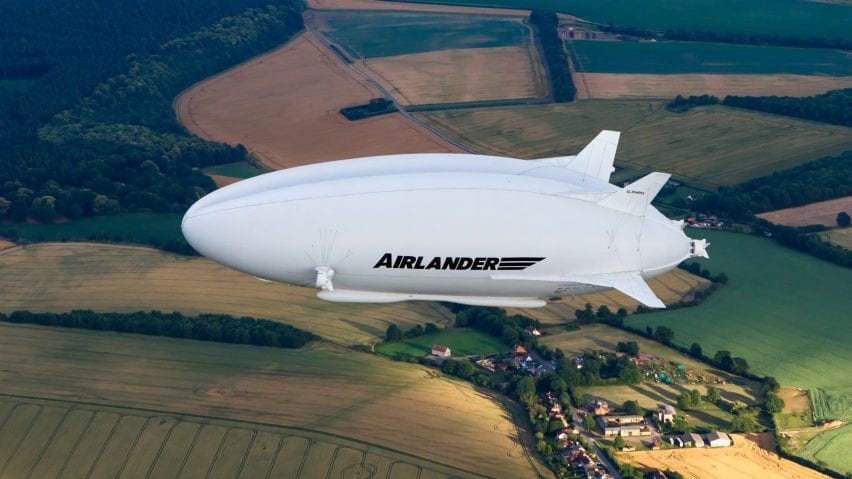UK aviation company Hybrid Air Vehicles has updated its "flying bum" Airlander 10 hybrid airship concept with a lower-carbon version featuring electric motors powered by hydrogen fuel cells.
The latest version of the airship will produce "75 per cent fewer emissions than conventional aircraft in similar roles," the company claimed.
The aircraft, which will be able to carry 100 passengers on short-haul routes when it goes into production, will still feature two diesel engines.
But Hybrid Air Vehicles (HAV) said a fully electric version could be available by 2030.
The Airlander 10 went viral in 2016 when photographs released of its test flight earned it the nickname of the "flying bum". Subsequent redesigns have made it svelter and less peach-shaped.
Hybrid airships combine features of both traditional lighter-than-air airships and aeroplanes, which are heavier than air and achieve lift via aerodynamic wings and powerful engines.
As a result, they are slower than aeroplanes but consume significantly less energy.
The hybrid Airlander 10 features a passenger cabin suspended beneath an aerodynamic, helium-filled balloon. This provides 60 per cent of its lift, with the remainder coming from the passage of air over the hull.
It is powered by four vectored engines, which can swivel to provide lift when taking off and forward thrush when in flight.
"Using lighter-than-air technology means that Airlander 10 requires significantly less power to generate lift and fly," a spokesperson for HAV told Dezeen.
"Airlander 10, therefore, produces far fewer emissions even before electrification."
Hydrogen fuel cells convert the gas into electrical energy via a chemical reaction rather than by burning it. They are being touted as a potential way of decarbonising air travel since the only emission is water.
HAV calculates that a passenger's individual carbon impact for a flight between Barcelona and Palma de Mallorca would be 4.5 kilograms on an Airlander 10, versus 53 kilograms taking the same trip on a traditional aeroplane.
Although airships are slower than traditional fixed-wing aeroplanes, HAV pointed out that they can deliver passengers closer to their final destination as they can take off and land on any flat surface, including water.
"Over shorter routes, this is balanced by Airlander 10's ability to operate much closer to the final destination and fly point-to-point," said HAV.
"In some cases, this makes the total journal time very similar or only slightly longer but with all the benefits of comfortable travel with very low emissions."
Helium is the second-most abundant element in the universe after hydrogen, but it is a finite resource because it is light enough to escape the earth's gravitational pull and float away into space.
The only non-renewable element on Earth, helium is a byproduct of the decay of radioactive elements including uranium and thorium.
Recently there have been fears that supplies of the gas are running out. However, HAV claims that Airlander 10 would not significantly deplete the planet's resources.
"Although helium is a finite resource, there are ample reserves and new helium fields are being identified now," said the company.
"Even with 600 aircraft in use in the world, Airlander 10s would make up just 1 per cent of the world's annual helium consumption."
HAV is partnering with British aviation business 2Excel Aviation to offer Airlander 10 to airlines and cruise companies.
"It is HAV's plan to produce at least 12 aircraft per year," said the company.
More low-emissions aircraft designs includes these three concepts for zero-emission commercial aircraft by Airbus and a V-shaped aircraft by Dutch airline KLM and TU Delft.

